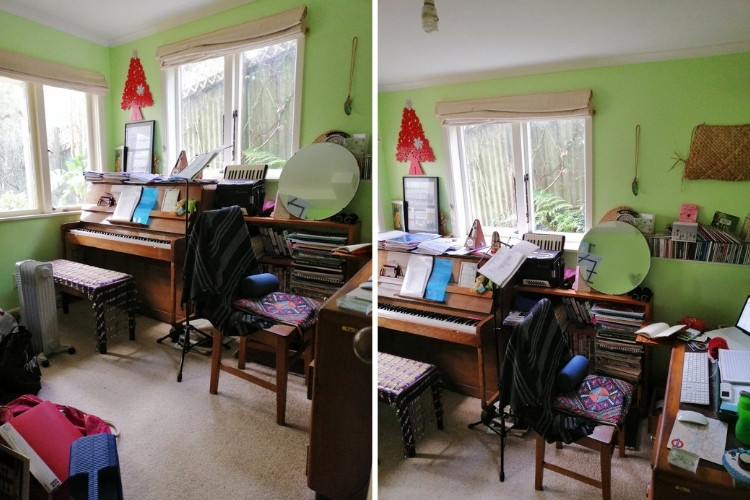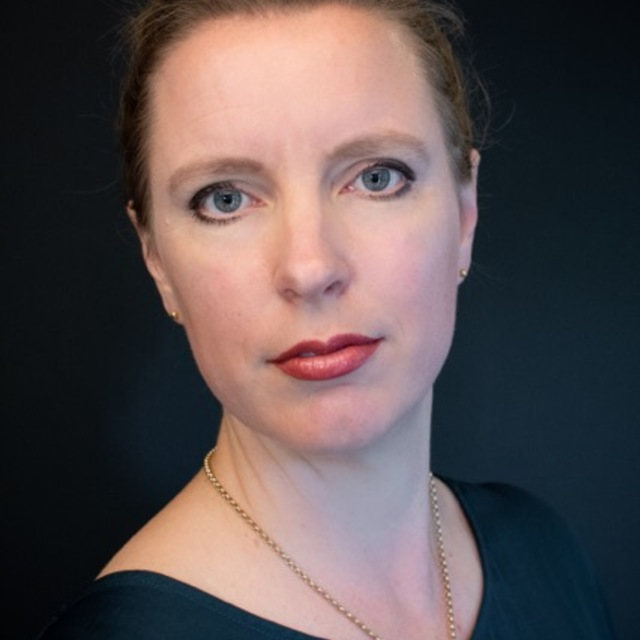What does a typical composing day look like for you? Please describe your routine. Is it strict or more free-form?
It's best if I can get a clear day (or half-day at least) so as to get on a roll. I find a half-hour here or there is usually not a helpful amount of time. I also find that I need to have no interruptions from family or devices, so the phone goes to silent and I quit my email programme, and I try to make sure my son has someone else available for interrogation!

Please describe the space where you compose your music. What makes this space special and why have you chosen it?
I work in a small room which used to be my step-son's bedroom. I also use it for practice and teaching (although it's a little on the small side for teaching). It's great to have my own room to work in - to be able to shut the door and get on with it. Virginia Woolf hit the nail on the head when she said "a woman must have money and a room of her own if she is to write fiction". I don't know how I'd get anything done if I had to work at the kitchen table.
What equipment (including software) do you have in your space? Is there anything special, interesting or quirky about it?
I have an old wooden desk with a Macbook Pro plugged into a larger screen and a couple of speakers. I find the larger screen great for working on Sibelius - a tiny screen is torture! I also use a slightly woolly-sounding Kaufmann upright piano - it's fine though and I don't need anything too bright and clangy in such a small room. Other than the essential computer and piano, I have all manner of miscellany: a small accordion I found by a rubbish skip; plastic bottles with slits cut in them so that they make a hooting sound when spun on a string; a small tin with a white cat on it, given to me by my standard 1 teacher in 1988; Chinese balls that chime when you turn them in your hand; a basket of boomwhackers (pitched plastic pipes used in primary school music classes); flax weavings on the wall made by my sister-in-law; etc etc...

Please describe your typical composing process. Does it change with each piece?
I do a lot of thinking and jotting down of ideas in an exercise book before writing any notes; I research the instruments I'm writing for if they're ones I'm less familiar with; research the group (if it's a group) that I'm writing for; do some listening to other music either related or sometimes completely unrelated to the project; go back to the exercise book; then to the piano (usually) for nutting out musical ideas and thinking about an (initial) harmonic structure of sorts; and the remainder of the process is spent between the piano and the computer and (when possible) the performer. It all tends to evolve as the project turns over in one's mind from day to day too - solutions to problems float to the surface, or new problems become apparent.
What have you finished recently?
I recently finished the SOUNZ Commission for Orchestra and Sistema Youth Orchestra. This was first performed in May at a free community concert in Taita, and will be recorded by SOUNZ in a live performance at the Michael Fowler Centre on October 19th. The performers will be Arohanui Strings and Orchestra Wellington, conducted by Marc Taddei.
SOUNZ blog is designed for expressive discussion and debate amongst the arts and broader community. This is intended to be a safe space so please remember to keep comments respectful and avoid personal attacks, criticisms of specific organisations and defamatory language. Comments are moderated to ensure that they comply with SOUNZ’s Community guidelines.
